Inbox and Environment News: Issue 347
February 11 - 17, 2018: Issue 347
Environmental Restoration And Rehabilitation Grants
Significant Pollution Incident At Beacon Hill
The Northern Beaches Council has tackled a significant pollution incident at Beacon Hill, with crews cleaning up a toxic substance before it made its way into South Creek and Narrabeen Lagoon.
Mayor Michael Regan said the incident had resulted in serious impacts to local environment and wildlife after a stormwater detention basin captured around 200,000 litres of contaminated water in a holding pond near Endeavour Drive.
“The thoughtless actions of one or more people have killed most of the aquatic life within the area, and cost the community around $150,000 in clean-up costs, as well as hundreds of hours of staff time dealing with this situation.
“The only survivors were three native eastern long-necked turtles that were rescued and relocated by Council staff.
“This is one of the biggest pollution incidents we’ve had to deal with as Northern Beaches Council. It happened on Christmas Eve and we’re still dealing with the after-effects.
“Fortunately, the prompt response of Council officers contained the pollution in the pond, but the impact was so bad the only way to remove it was to drain and dig out the entire pond, and that’s a huge job.
“We’ve had to organise a number of waste water tankers, excavators and dump trucks, at considerable expense,” Mayor Regan said on Thursday this week.
Along with emptying the contaminated water, crews have also removed around 60 tonnes of sediment as a result of the incident.
Illegally disposing of chemicals can drastically affect our natural areas and harm our local wildlife. Visit northernbeaches.nsw.gov.au and search hazardous waste for more information and to learn about correct disposal procedures.
“Quite apart from the environmental impact, the cost of this clean-up is substantial, and that’s money which could have been spent providing community services and other benefits. It’s really frustrating,” Mayor Regan said.
Council’s Environmental Compliance team is investigating the source of the pollution, and anyone with information is asked to contact Council on 1300 434 434.
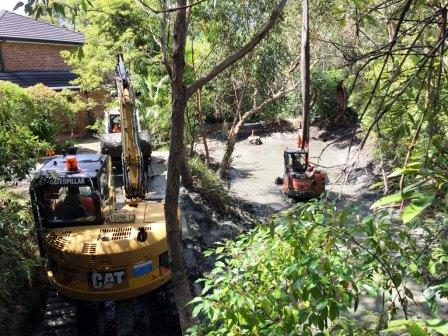
Excavators and bobcats cleaning the polluted area - photo supplied
Keeping Our Waterways Clean
In your Garden
- Put leaves and grass clippings into compost or onto garden as mulch
- Cover piles of soil, sand or mulch
- Build barriers around your garden beds to contain the soil
- Use organic fertilisers
- Have your sewer checked
- Install rainwater tanks and/or systems to divert roof water directly to gardens.
When you Maintain your Car
- Use a service station car washing bay or a car wash that recycles water
- Wash your car on lawn and pour any leftover soapy water onto the lawn
- Regularly service your car
When you Paint and Renovate
- When you use water-based paint, clean up over soil
- Keep oil-based paint, turps and solvents clear of gutters and drains
- Reuse turps once paint has settled
- Allow unwanted paint to dry out, then take tins to a chemical cleanup event or licensed landfill
- Don’t hose sand or gravel, or wash out cement mixers or barrows, so waste flows into street gutters
- Don’t leave piles of sand or gravel uncovered where it can wash or blow into gutters
Industrial Sites
- Clean up wind-blown litter
- Store and dispose of oil and waste water correctly
- Clean out your grease trap regularly
Construction Sites
- When building, landscaping or renovating, always use appropriate sediment and erosion
- Store chemicals in a properly maintained and operated bunded and covered storage area
- Keep adequately stocked spill kits on hand and make sure staff know how to use them
- Never, ever hose chemical spills down the drain
Sick Bees Eat Healthier
Water Research Laboratory Open Day
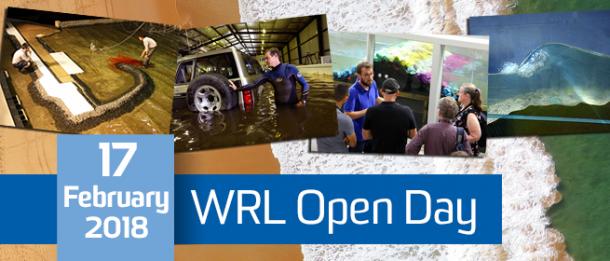
UNSW: Latest ARC Funding
Regional Forest Agreements (RFA)
Promoting The Remediation Of Contaminated Land In NSW
- provide an updated and clearer State-wide planning framework for the remediation of land;
- require consent authorities to consider the potential for land to be contaminated when determining development applications;
- clearly list the remediation works that require development consent; and
- introduce certification and operational requirements for remediation works that can be undertaken without development consent.
Stop The Senseless Destruction Of Our Wildlife: Nature Conservation Council (NSW) Taking State Government To Court
- add extinction pressures to our state's 1000 threatened species;
- threaten our clean, reliable water supplies;
- turn our fertile land into wasteland through erosion and salinity;
- put landmark trees and bushland at risk; and
- add further to Australia's carbon pollution.
- Failure to adequately consider the principles of Ecologically Sustainable Development
Proposed Amendments To The Voluntary Land Acquisition And Mitigation Policy And Mining SEPP
- changes to air quality assessment criteria for fine particles (PM10) from 30 µg/m3 to 25 µg/m3
- the introduction of new regulation of very fine particles (PM2.5) at 25 µg/m3 (24 hour) and 8 µg/m3 (annual); and
- changes to the noise assessment criteria to slightly modify assessment noise levels (however no changes to cumulative noise levels were made).
- negotiated agreements;
- acquisition and mitigation operational processes;
- the valuation of land that is to be acquired; and
- the regulation of impacts on land subject to acquisition rights.
- Clause 12AB of the Mining SEPP will be revised to update the non-discretionary standards to align with the EPA’s revised policies for air and noise. The non-discretionary standards mean that a consent authority cannot require more onerous air and noise standards than the revised assessment criteria; and
- Clause 12A of the Mining SEPP will be revised to refer to the revised VLAMP. This clause requires the consent authority to give consideration to the VLAMP before determining an application.
Call For National Heritage List Nominations
No Gas Drilling Off Newcastle Petition
Update On Baleen 2D HR Seismic Survey
Bushcare Groups Recommence For 2018
Friends Of Narrabeen Lagoon Catchment Activities

Green Team Beach Cleans 2018!
Hosted by The Green TeamThe Green Team is back for 2018! It has been estimated that we will have more plastic than fish in the ocean by 2050...These beach cleans are aimed at reducing the vast amounts of plastic from entering our oceans before they harm marine life.
Anyone and everyone is welcome! If you would like to come along, please bring a bucket, gloves and hat. Kids of all ages are also welcome!
We will meet in front of the surf club. Hope to see you there!
The Green Team is a Youth-run, volunteer-based environment initiative from Avalon, Sydney. Keeping our area green and clean.

Ku-Ring-Gai Chase National Park: 1080 Fox Baiting Program
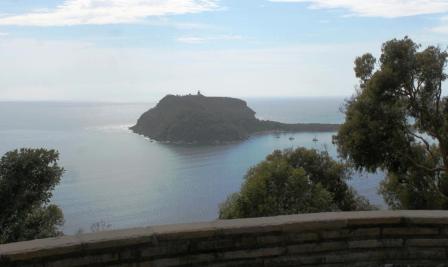
Clean Up Australia Day 2018
Scotland Island Is Registered To Participate Once Again!
Coasters Retreat
Bayview
Mona Vale Beach
Narrabeen-Warriewood
Warriewood Beach And SLSC
Narrabeen Rock Pool
Wimbledon Island, Narrabeen Lagoon
Summer Of Surveillance, Surveys And Sniffer Dogs In Kosciuszko National Park
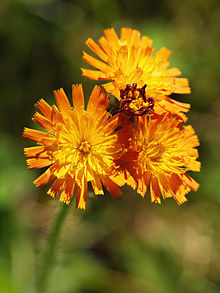 NPWS Senior Weeds Officer, Hillary Cherry, said this year they are ramping up efforts to stop orange and mouse-ear hawkweed from invading this iconic conservation area.
NPWS Senior Weeds Officer, Hillary Cherry, said this year they are ramping up efforts to stop orange and mouse-ear hawkweed from invading this iconic conservation area.Bloomfield Colliery Modification 4 Extension
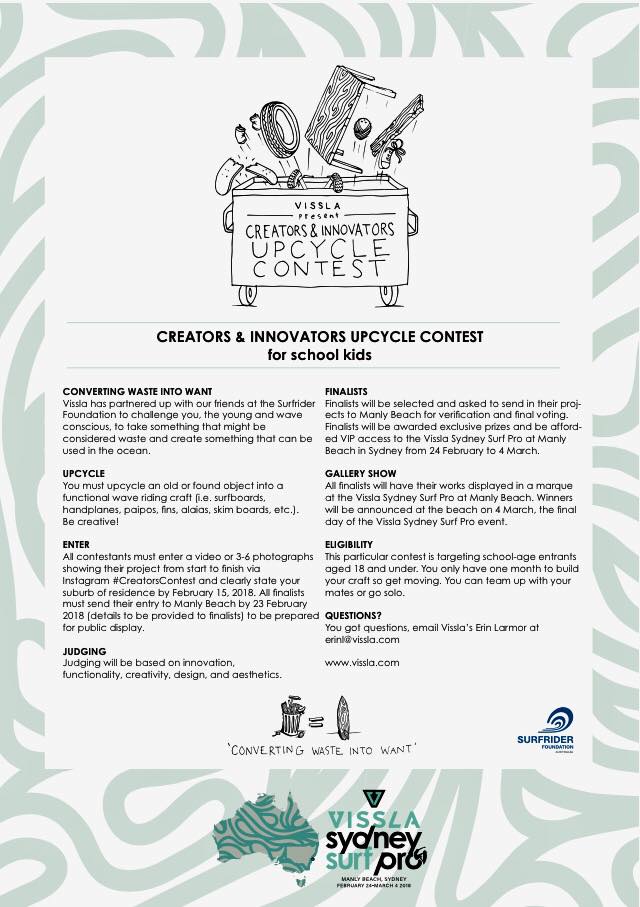
Large-Group Living Boosts Magpie Intelligence
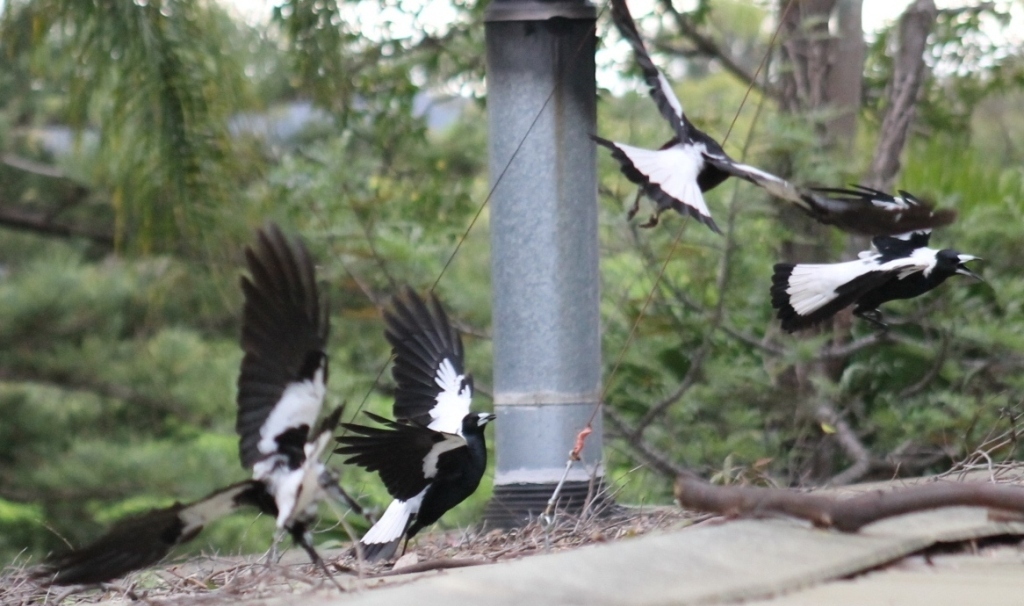
Up Close With Young Fairy Martins – Windsor
Mapping The First Family Tree For Tropical Forests

How To Reduce Heat Extremes By 2-3 Degrees Celsius
Palm Beach Longboarders 'Show Us Your Dooleys' Comp 2018 Opens A Great Year
Palm Beach wrapped up their first comp for 2018 last Sunday, February 4th.
It was the Day of the Dooleys again with patron Mick Dooley attending to enjoy some great waves and great surfing – all on Mr. Dooley’s boards – ergo ‘Show Us Your Dooleys’.
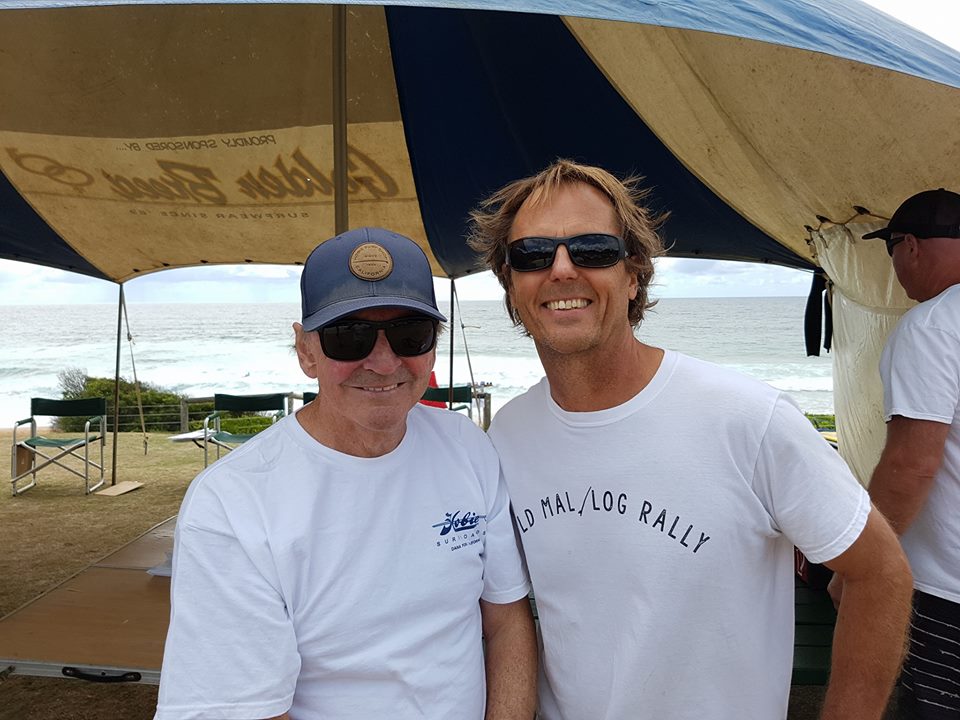
Mick Dooley and PBL VP Greg Nichols
There were a couple of legends, youthful and mature there. Young Jasper Derwent rode his bike to Palmy for our first comp of the year, Grant Samo Salmon lent him a board then he went out and ripped it! Go Jasper!!
Congratulations to Blaze Roberts for winning the 4ths final!
Blaze took part in her first Palmy Longboarders comp in November 2017 by getting involved in their annual Old Mal-Old Log Rally - always a great festival of brilliant boards, great food and some classic vehicles on display.
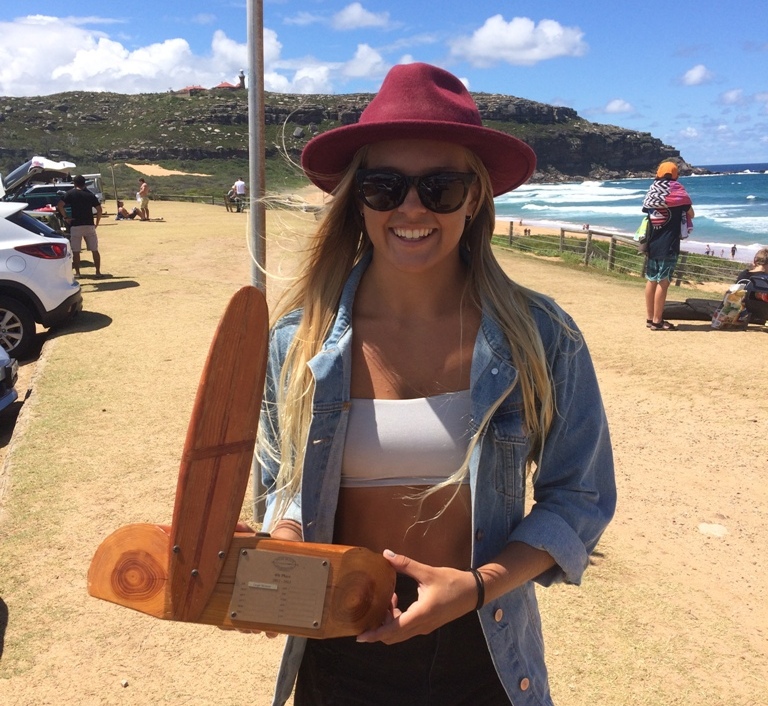
Blaze Roberts - a grinning winner!
Palmy Longboarders is a longboarding club of mature groms and grommets meeting beachside at 7am on the first Sunday of each month. At Palm Beach of course!
New members are always welcome so if you want to try out that great way of surfing get along to a Sunday meet or get in touch via their facebook page.
You can find out more about Palmy Longboarders in their Profile page

Inside Art Express 2018
Works On Display At The Art Gallery Of NSW
Until March 25th, 2018
The annual ARTEXPRESS exhibition is one of the most dynamic and popular at the Gallery.
Featuring a selection of outstanding student artworks developed for the artmaking component of the HSC examination in Visual Arts 2017, ARTEXPRESS 2018 provides insight into students’ creativity and the issues important to them.
The exhibition encompasses a broad range of approaches and expressive forms, including ceramics, collection of works, documented forms, drawing, graphic design, painting, photomedia, printmaking, sculpture, textiles and fibre, and time-based forms.
Maya WilliamsNorthern Beaches Secondary College, Freshwater Senior Campus
Artwork titleTo forage: nature’s jewelsHSC year 2017ARTEXPRESS year 2018Expressive formDocumented forms
Artist’s statementBeauty: (noun) the quality of being pleasing to the senses or to the mind. Natural: (adjective) existing in or derived from nature, not made or caused by humankind. Raw: (adjective) in its natural state, unprocessed. Foraged: (verb) obtain (food or provisions) by searching. Jewel: (noun) an ornament or piece of jewellery containing a precious stone.
My practice focuses on the collection and transformation of raw, natural materials into body adornments. I see beauty in the cycles of nature, from the buds of blossoms to the bounty of fruit and the dried and decaying remnants of these processes.
Influencing artists:Catriona PollardRen HangFreesia KahloTracey Deep

To forage: nature’s jewels- courtesy AGNSW and Artist
ARTEXPRESS is an annual series of exhibitions of exemplary artworks created by New South Wales visual arts students for the Higher School Certificate examination.
It includes a broad range of approaches and expressive forms, including ceramics, collection of works, documented forms, drawing, graphic design, painting, photomedia, printmaking, sculpture, textiles and fibre, and time-based forms.
Inside ARTEXPRESS (AGNSW)lets you explore artists and works back to 2005. It includes process diaries for some students and related artworks in the Gallery’s collection to consider.
View all other 2018 Works or explore the whole collection at: Visit: www.artgallery.nsw.gov.au/insideartexpress

Live Music: ARTEXPRESS 2018
Celebrating Young Local Musicians
In conjunction with ARTEXPRESS, we celebrate the talent of young musicians with performances by some of the leading bands and vocalists from Sydney.
Wednesday 7 & 14 March, 7.30pmFreeDuration 45 minutes Location: Entrance court
Related exhibition: ARTEXPRESS 2018
Taj RalphTaj was first discovered busking on the streets of Sydney by Solo from the Australian hip hop duo Horrorshow. Impressed with Taj’s voice and musical sensibility, he was featured as a vocalist on their single PUSH, which was released in late 2017. His big break came, at the age of 16, when Taj was selected as a finalist for Triple J radio’s 2017 Unearthed High competition. Since then he has independently released three tracks and his laid-back RnB sounds and jazzy guitar hooks have been recognised by online music editorials such as Purple Sneakers and The Most Radicalist. He has played shows at The Record Crate in Glebe, as well as supporting Kim Churchill, Amy Shark and Horrorshow.Wednesday 7 March 2018 7:30pm – 8:15pm
Rebecca Hatch
Sydney-based vocalist Rebecca Hatch blends hip hop and indie pop to create a unique sound. She was recently named the winner of Triple J Unearthed High Indigenous Initiative at the 2017 National Indigenous Music Awards. Being of Samoan and Indigenous Australia descent, Rebecca has performed at numerous events in both her local community and the wider community.Wednesday 14 March 2018 7:30pm – 8:15pm
Winners Of 2018 BHP Billiton Foundation Science And Engineering Awards
February 6, 2918: CSIROA robotic window cleaner, a water filter made from agricultural waste, and a plastic made from prawn shells are the main winners of the 2018 BHP Billiton Foundation Science and Engineering Awards for school students announced in Melbourne today.Oliver Nicholls winner of the Engineering category, combined his knowledge of mathematics, physics and design to create an autonomous robotic window cleaner. His design aims to reduce injury and decrease the commercial costs of window cleaning. The final product went through rigorous prototyping, testing and evaluation to show commercial viability.
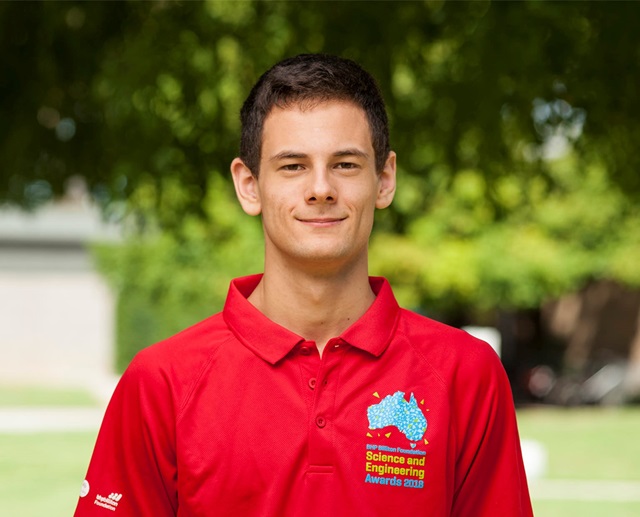
Oliver Nicholls winner of the Engineering category.
With aspirations to become an environmental engineer, Minh Nga Nguyen, winner of the Investigations category, used agricultural by-products such as corn husks, bamboo scraps and rice waste, to create a biochar product with the dual capability of filtering water and then being used as a fertilizer. This process reduces the effects of contaminated water and pollution created by agricultural waste. She hopes this technology will provide positive impact globally.
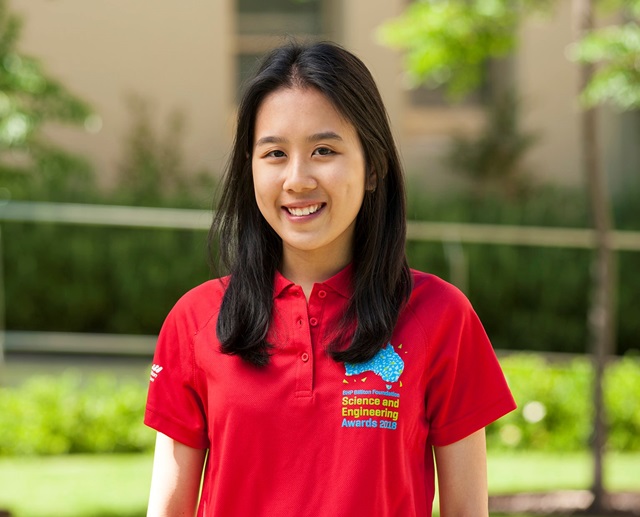
Minh Nga Nguyen winner of the Investigations category.
Angelina Arora, winner of the Innovator to Market award, set out to develop a bioplastic made from prawn shell and sticky protein from the silk of silkworms. The plastic completely degrades leaving nothing harmful behind. She tested the strength, elongation, clarity, solubility, deconstruction and endurance of the plastic as well as other plastics made out of potato, corn and tapioca. Angelina hopes this plastic could replace current plastic shopping bags and other packaging to reduce the environmental impact in landfill and in the ocean.
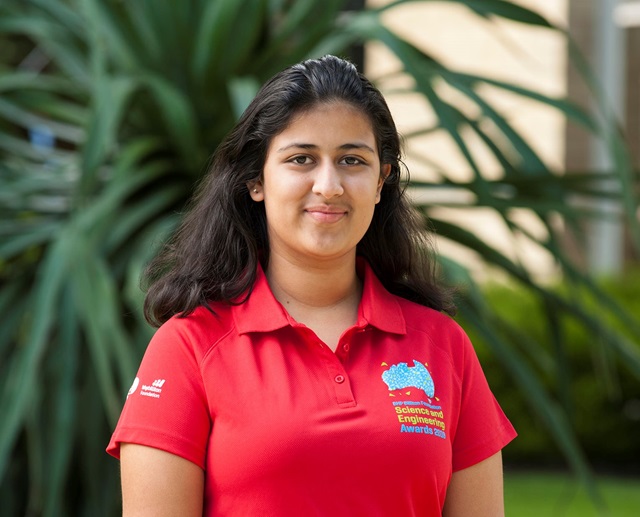
Angelina Arora winner of the Innovator to Market award.
CSIRO Chief Executive Dr Larry Marshall said the award winners' and finalists' ideas could help all Australians cope with a rapidly changing future.
"The world is changing faster than many of us can keep up with, but science, technology, engineering and maths can guide that future through innovation," Dr Marshall said.
"Around three quarters of all future jobs will need STEM and we're absolutely committed to helping school students develop these skills so they can shape Australia's future.
"We know that the achievements of the winners and finalists will inspire other students to become innovators solving the big challenges that face our world."
BHP Chief Executive Officer Andrew Mackenzie said the awards had been supporting young people's achievements and interest in STEM since they began in 1981.
"We've seen alumni from the awards go on to do extraordinary things and I have no doubt that the winners and finalists from this year will become leaders in their chosen professions," Mr Mackenzie said.
"The dedication and passion these students have for STEM is inspiring."
The BHP Billiton Foundation Science and Engineering Awards are a partnership between the BHP Billiton Foundation, CSIRO, the Australian Science Teacher Association and each state and territory Science Teachers Association. Six of the finalists will have the opportunity to go to Intel International Science and Engineering Fair (ISEF) in the USA where over 1800 high school students from 75 countries, regions and territories are given the opportunity to showcase their independent research.
Student Winners and Placeholders
EngineeringWinner: Oliver Nicholls, Barker College, NSW, Autonomous robotic window cleanerSecond: Lachlan Bolton, Redeemer Baptist School, NSW, Future BoardThird: Jack Chapman, St Leonard's College, VIC, Electroduino-mechanical bionics Hand
InvestigationsWinner: Minh Nga Nguyen, Sydney Girl's High School, NSW, Recycling waste into biochar: a sustainable agricultural wastewater filter and fertiliserSecond: Caitlin Roberts, The Friends' School, TAS, The protease inhibiting effect of almondsThird: Ella Cuthbert, Lyneham High School, ACT, Is honeybee silk antimicrobial?
Innovator to MarketWinner: Angelina Arora, Sydney Girls High School, NSW, Shrimp shell bioplastics: A new solution to the world's growing plastic problem.
For more information go to www.scienceawards.org.au



Up Close With Young Fairy Martins – Windsor
February 2018: Published by Birds In Back Yards TV
These Fairy Martins (Petrochelidon ariel) were filmed in early December 2017 at Windsor, NSW. The location is semi-rural with open grassy areas, pockets of vegetation and a waterhole. See https://youtu.be/YWcjCnvj80E for a photo of the exact filming spot.
This sort of habitat is ideal for Fairy Martins, but they are not always seen there.
In southern parts of Australia, Fairy Martins are breeding migrants; they arrive in spring and build their nest colonies with mud or clay. By December their numbers swell with newly fledged juveniles and some older offspring with signs of adult plumage. Compare the buff-fringed wing feathers of the juveniles to the glossy blue-black and brown wings of the adults in the footage of six Fairy Martins (four juveniles bookended by two adults).
You may also notice that juveniles have paler or duller rufous-brown crowns with some streaking, while the streaking on the throat and breast is more pronounced in adults. The other clue to age is the bill. For adults it is clearly black, but the youngest birds have an obvious yellow gape. We also saw a few juveniles where the yellowish tone to the base of the bill was disappearing or gone and the streaking on the throat was increasing. Presumably they fledged earlier in the breeding season.
Australia A Study Of Warm Environments And Their Effect On British Settlement By Taylor, Griffith. Publication Date 1940 By Metheun, London.
Moran Contemporary Photographic Prizes
The 2017 Moran Contemporary Photographic Prize has been deferred until early 2018.The growth in interest in the Photographic Prize is such that the Moran Arts Foundation wants to recognise photography as an art form in its own right and give the artists the profile they deserve.
About the Moran Contemporary Photographic PrizeEstablished in 2007, the Moran Contemporary Photographic Prize (MCPP) is a national competition that awards and promotes Australian contemporary photography and excellence in all forms of still based artwork.
The MCPP invites photographers to interpret ‘Contemporary Life in Australia’ with an emphasis on Australians going about their day-to-day life. We aim to encourage the production of photographs taken in Australia, by Australians, that reflects the diversity, multiculturalism and uniqueness of life, no matter where you live in Australia.
There are many ways to interpret this brief, but we are after your perspective on contemporary Australian society, your life, your dreams, your abilities, your inabilities, your mates, your loves. We want the good, the bad, the ugly, the beautiful and the everyday. Entries are NOT restricted to portraits.
Currently with an annual first prize of fifty thousand dollars ($50,000), the Prize is an important part of Australia's Arts calendar. The Moran Prize is acquisitive and the winning photograph(s) immediately becomes the property of the Moran Arts Foundation, to be held and exhibited permanently as part of the Moran Arts Foundation Collection. Prize Money
Open Section - $80,000 in prize money with the winner awarded $50,000. All 30 finalists will each receive $1,000. Secondary School Students, Year 11 to 12 - The winner is awarded $5,000 and their school is awarded $5,000 for the development of arts at the school;Secondary School Students, Years 9 to 10 - The winner is awarded $3,000 and their school is awarded $3,000 for the development of arts at the school;Secondary School Students, Years 7 to 8 - The winner is awarded $2,000 and their school is awarded $2,000 for the development of arts at the school;Primary School Student Category, Kindergarten to Year 6 - A digital camera will be awarded to 25 selected winners plus a certificate of merit. 2018 Moran Contemporary Photographic PrizeEntries open in January 2018 for the next Moran Contemporary Photographic Prize. Photos taken from 1 Sep 2016 up until the entries close date (yet to be announced) will be valid for entry.
2018 Moran Contemporary Photographic Prize JudgesCheryl NewmanJon Jones
Queensland Scientists Discover Off-Switch For 'Molecular Machine' Active In Many Diseases
A Place For Men To Speak Up When Times Get Tough
The Fly Program from Screencraft on Vimeo.
Diet May Influence The Spread Of A Deadly Type Of Breast Cancer
Nine Fishermen Saved After Six Days Adrift At Sea
Study Finds Inaccuracies In Global Reporting Of Fish Catches
Got A Coastal Bridge To Retrofit? There's An Optimal Approach For That
2017 Was An Average Year For Worldwide Shark Attacks, Deaths
A Plan To Make NSW Roads Safer
- expanding the mandatory alcohol interlock program, so mid-range drink drivers must provide a negative breath testing sample before a car will start
- giving police the power to issue on-the-spot fines and licence suspensions for low-range drink driving
- changing laws so camera technology can be used to enforce mobile phone offences
- increasing the number of heavy vehicle average speed camera locations, including in metropolitan Sydney.
UNSW: Latest ARC Funding
New Fact Sheet Helps Businesses Identify Beneficial Owner Requirements
The Future Of Wireless Communications Is Terahertz
Searching For Targeted Treatments For Inflammatory Diseases
Disclaimer: These articles are not intended to provide medical advice, diagnosis or treatment. Views expressed here do not necessarily reflect those of Pittwater Online News or its staff.